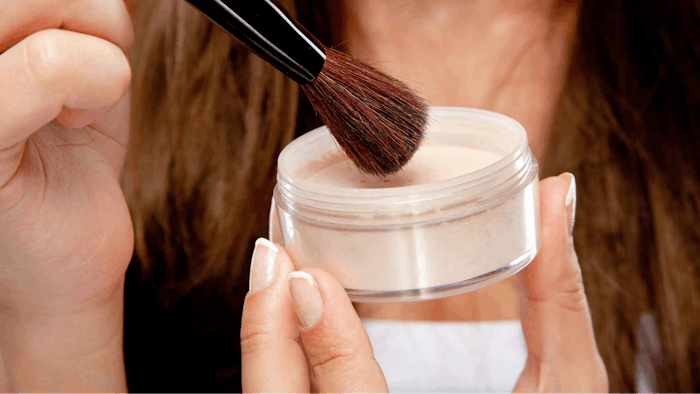
The U.S. Food and Drug Administration (FDA) has released the results of its 2023 sampling of 50 talc-containing cosmetics for the presence of asbestos. Per the FDA, "Asbestos was not detected in any of the 50 samples tested in 2023," supporting similar findings in 2022.
Talc Cosmetics Sampling
For the described studies, cosmetic products ranging from hair root touch-ups, cover-ups, bronzing powders and blushes, to setting powders and face powders were selected and purchased by the FDA (see the FDA table for the full list) based on factors including:
- type of talc-containing cosmetic product,
- price range,
- popular products on social media and in advertisements,
- products marketed to children,
- products marketed to women of color, and
- third party reports of potential asbestos contamination (if any).
Then samples were blinded and transferred to AMA Analytical Services, Inc. (AMA) for analyses.
Asbestos Detection
Testing was performed by AMA Analytical Services, Inc. (AMA), which is accredited for analysis of asbestos in bulk materials through the National Institute of Standards and Technology administered National Voluntary Laboratory Accreditation Program (NIST-NVLAP) and has been awarded contracts with the FDA to test talc-containing cosmetic products for asbestos since 2018. The company used a combination of polarized light microscopy (PLM) and transmission electron microscopy (TEM), both of which are required to confirm negative results, per the company.
Indeed, as previously reported, experts from eight U.S. federal agencies, forming the Interagency Working Group on Asbestos in Consumer Products (IWGACP), released a report on scientific opinions of testing methods for asbestos in cosmetics. The experts concluded both methods were required to identify and report on the presence of asbestos and similar particles.
See archived: [update] Asbestos in Talc? Latest FDA Tests Find No Evidence
Lowering the Asbestos Detection Limit
A recent study published in the Journal of Hazardous Materials Advances, however, describes an approach that can lower the asbestos detection limit. The method is based on fluorescence microscopy (FM) and a fluorescently labeled asbestos-binding protein engineered for this purpose.
Per the authors, using the FM approach, the limit of detection of the fiber diameter of asbestos was approximately 0.06 µm, surpassing the limit of PLM (~1%) and approaching that of electron microscopy. It could therefore detect nano-scale fibers. Notably, the method enabled the selective visualization of asbestos fibers, including those hidden beneath talc particles.
However, the authors acknowledged the resolution of FM is limited by optical diffraction, making it difficult to determine the precise diameters of nano-scale asbestos fibers. They therefore emphasized the need to use TEM or SEM when precise fiber dimensions are required. Another limitation of the FM method is the specificity of the employed fluorescent asbestos probes, the authors noted.
MoCRA-mandated Asbestos Testing
The cosmetics R&D industry has experienced a critical focus on safety and efficacy testing in recent years but the pressure is on, now that the Modernization of Cosmetics Regulations Act of 2022 (MoCRA) is coming into force. The act will require standardized methods to detect and identify asbestos in talc-containing cosmetic products, making it all the more critical to explore every avenue to ensure the products our industry creates are safe and push the boundaries of known and accepted methods.

!['The most polluting industries, pharmaceuticals and cosmetics, will be required to pay at least [80%] of the cost for micropollutant removal...'](https://img.cosmeticsandtoiletries.com/files/base/allured/all/image/2024/01/scientist_water_monitor_sample_pollutionAdobeStock_297782139.65ba74e958d97.png?auto=format%2Ccompress&fit=crop&h=191&q=70&rect=0%2C151%2C2179%2C1227&w=340)






!['I think the biggest game-changer about [MoCRA's] ... requirement for GMPs is how it changes what it means to be adulterated,' Brandi Reinbold, senior manager of global certification for NSF International, said in this sponsored videocast. Register now to watch and learn more. It's free.](https://img.cosmeticsandtoiletries.com/files/base/allured/all/image/2023/11/NSF_Intl_Thumbnail.6554efdc29816.png?auto=format%2Ccompress&fit=crop&h=191&q=70&rect=275%2C70%2C1328%2C748&w=340)

